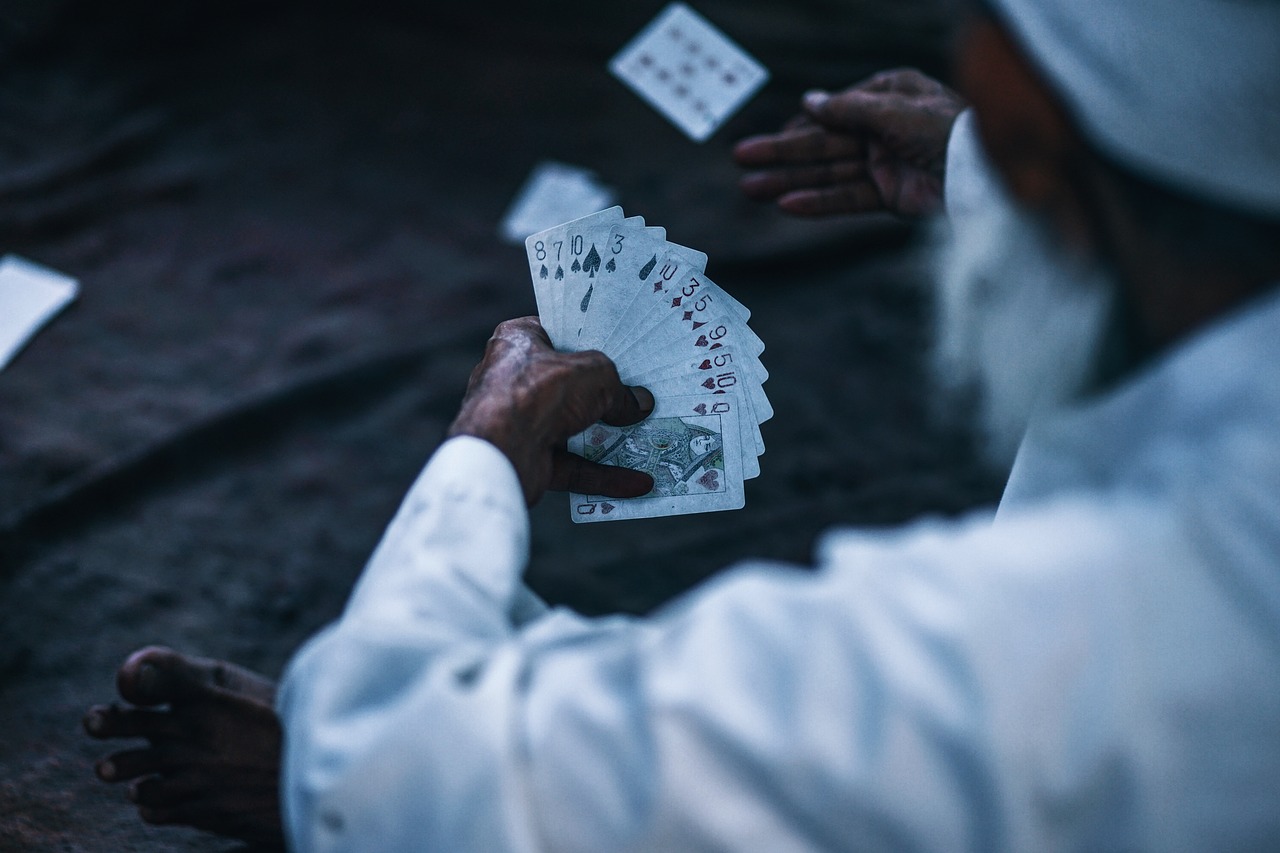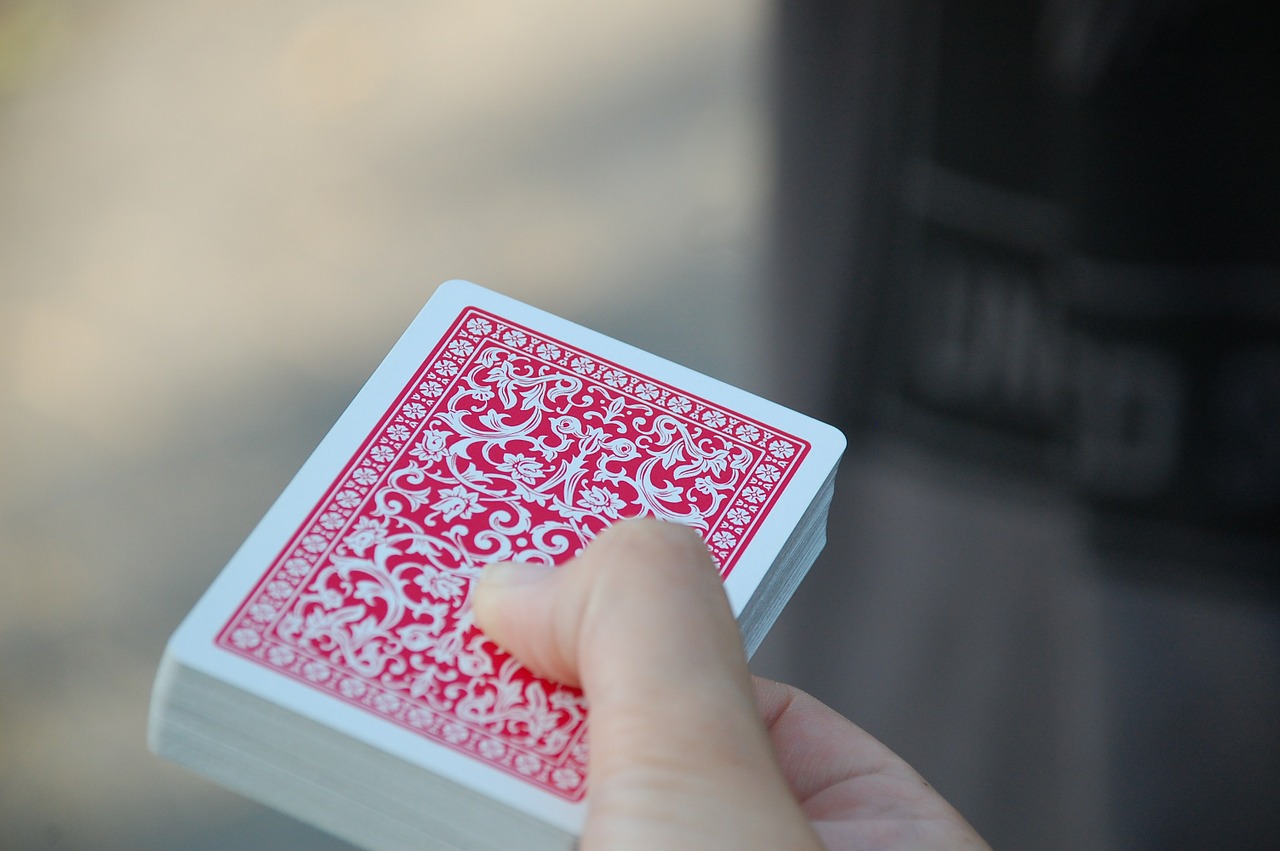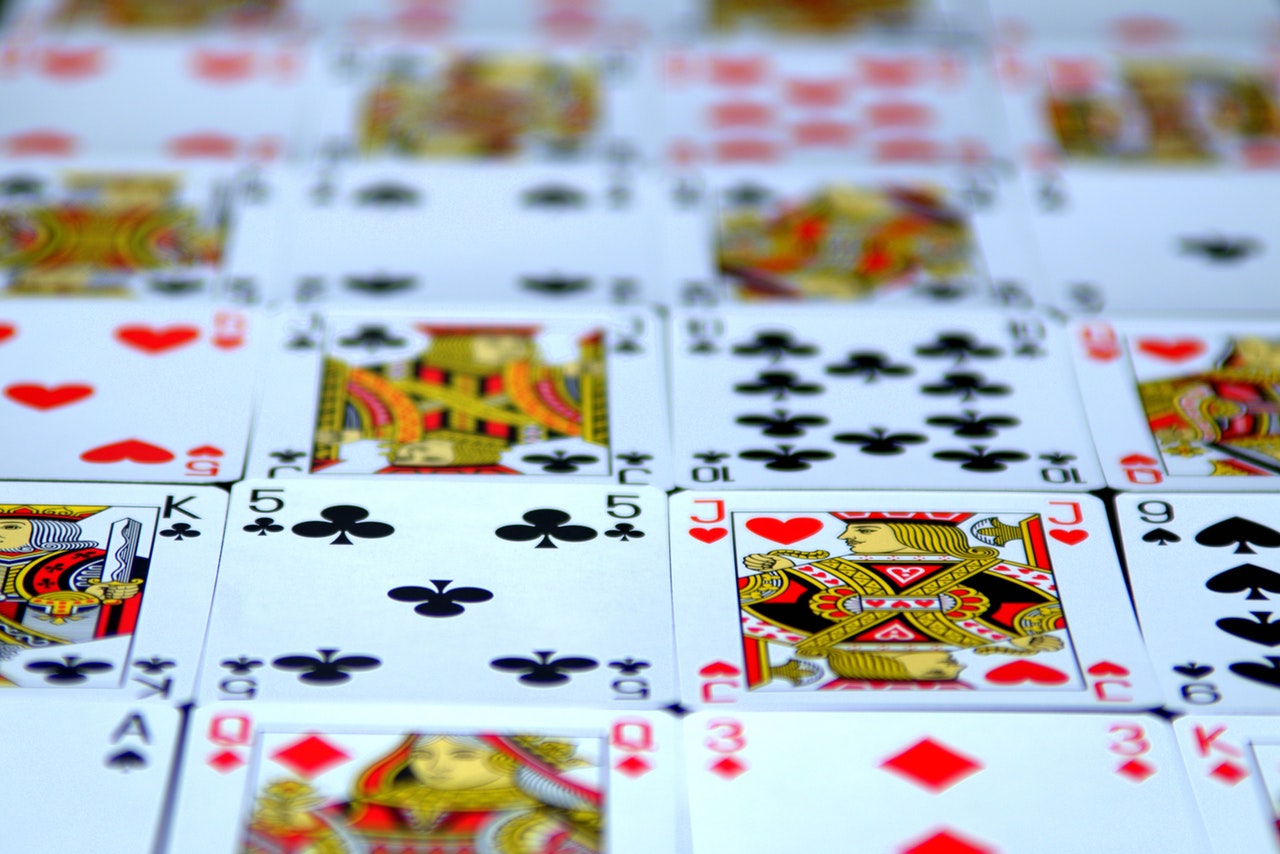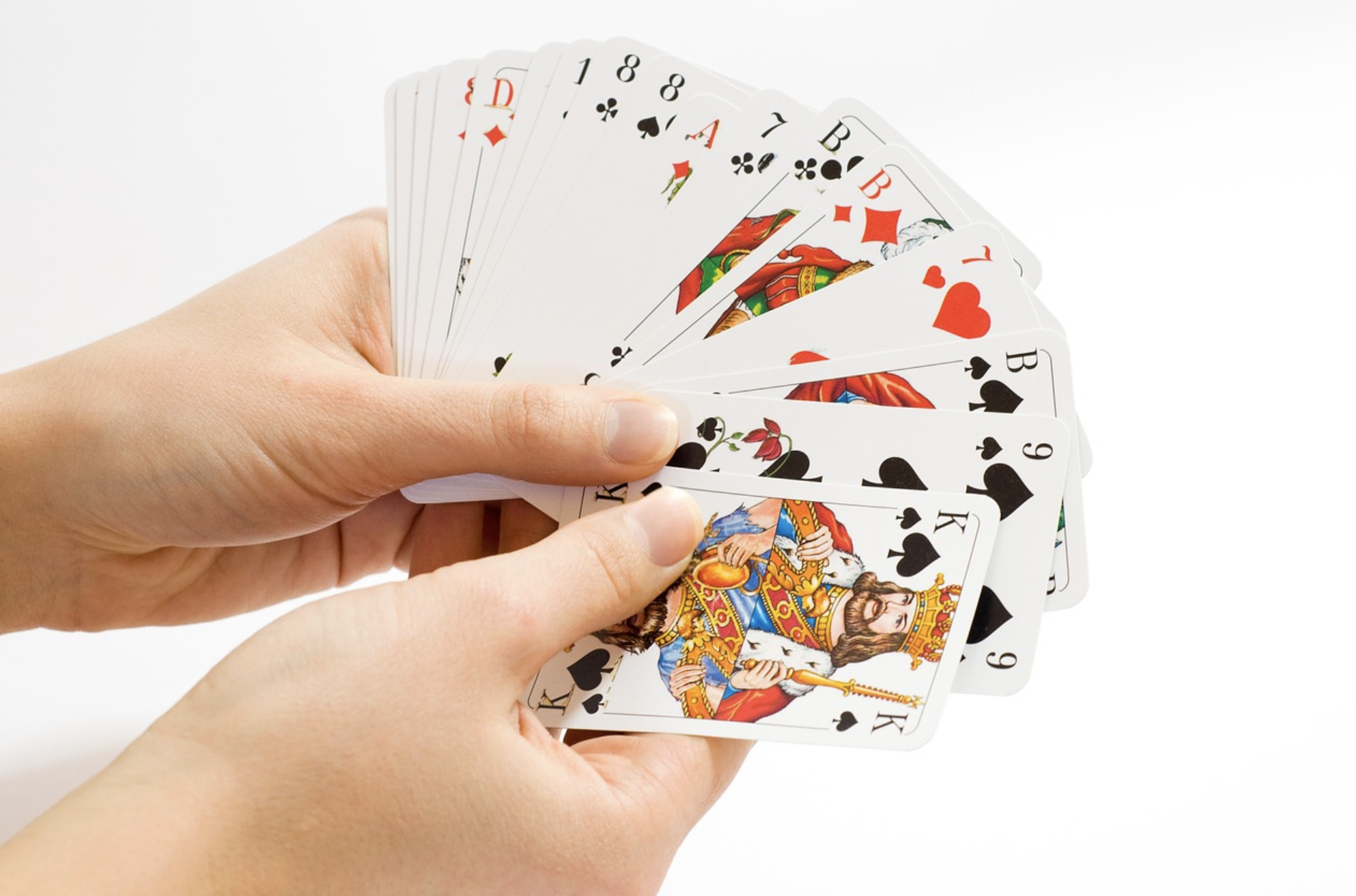Spite and Malice is solitaire with a twist. Instead of playing alone, players pair up to complete their solitaire game first while derailing the other player. The game looks the same, but there are some different twists that include not needing to pay attention to suits, playing with 52 cards but possibly not having all the cards needed to finish the game and the added pressure of having another player trying to keep you from winning.
In this game, the winner need not get all four sets of cards in order as they do in regular solitaire. The point here is to use the ordering of cards to get rid of their collection of cards, called the “pay-off cards.” They play the game with each player taking a turn one at a time, so it is not physical race like others that include Racing Demon. This game is slower paced as players take their turns and try to outsmart each other. This game is also sometimes called Cat and Mouse.
Spite and Malice – The Game
To start the game, all you really need are two players and two standard decks of cards. Remove the Jokers, so you have 52 cards in each deck. The two Joker-less decks get shuffled together. After the decks are shuffled and combined, the dealer distributes the cards.
To start the dealing, each player gets a stack of 20 cards. They deal these face-down, and this stack becomes the “pay-off pile.” When each player has their 20 cards in a stack, they place them to the right of the dealer in front of each player.
After they deal to each player off of the pay-off pile, they then receive five cards that make up their hands. These cards the players can on course look at. They put the rest of the cards in a pile to make up the stock pile. They place that pile in the middle of the two pay-off piles.
Get Rid of all the Cards in your Pay-off Pile

Image by : igorovsyannykov
The point of the game is to get rid of all the cards in your pay-off pile first. Players get rid of those cards by playing them on a center stack. When the game starts, there are none of these stacks, but soon there will be three piles in the middle of the players that become the center stacks. These stacks each start with an Ace and will be stacked in the following order: A-2-3-4-5-6-7-8-9-10-J-Q. The Kings are missing from this order on purpose; they play them as being a wild card.
The game begins with each player turning over the top card in their pay-off pile. Whichever player has the higher card to start gets to go first. To start the center stacks, a player needs to put down an Ace. This starts that stack, and they put cards down in the order listed above without worrying about suits.
Center Stacks Shared between the Two Players

Image by : Pexels
Beyond the center stacks they share between the two players, there are also up to four working piles created by each player. They call these the “side stacks.” These sit next to the pay-off piles for each player. The side stacks are also face up but not placed in any real order or grouped by suit. Instead, these serve as a place for each player to essentially discard or park cards they cannot play on one of the center stacks. Each player can have up to 4 side stacks.
The cards in the player’s hand help them play through the face-up card from the pay-off pile. The most important part is moving the cards from the pay-off pile to the center stacks by placing them in the correct order. For example, if the player has a 5 on top of their pay-off pile with a 3 showing on one of the center stacks, they can use the 4 in their hand first on top of the 3. This then allows them to play the 5 from the pay-off pile.
The end of each palyers Turn

Image by : jlaso
During each turn, a player can start by placing a card from their pay-off pile onto one of the center stacks, moving one of the top cards from a side stack to the center or playing out of their hand to the center stack. Remember the point is to get rid of cards in the pay-off pile so each move should further that cause. Players can continue to play cards to the center stacks until they can no longer play from the top of the pay-off pile. At this point, the player needs to play on of the cards in their hand to a side stack. This signals the end of their turn.
When a center stack is completed by placing Ace to Queen in order, the whole pile is shuffled to return to the stock. This will leave an open space to create a new center stack with an Ace.
Each player starts their turn with five cards in their hand. If they do not have five cards, they first pick up the missing number of cards out of the stock pile. This is not a game tied to getting rid of the cards in your hand, so there is no penalty for picking up cards each turn.
Player Wins by Using all the Cards in Their Pay-off Pile

Image by : Free-Photos
The player wins the game by using all the cards in their pay-off pile. It is possible to end the game without a winner if there are no more cards in the stock pile. This can happen if center stacks are not completed and not moved back to re-stock the stocks pile.
When the stock pile runs out, some rules state this is a tie. Other players count the number of cards each player has in their pay-off pile. Whoever has fewer cards, in that case, would be deemed the winner.
A Brief History of Spite and Malice

Image by : Pixabay
Hasbro sells a version of the game under the name Spite and Malice, but this is not where the game started. Many sources point to the game dating back to the 1880s in Europe. It started out as a way for two people to battle out to win a game of solitaire. They played this before the First World War when it first appeared in the United States. Servicemen brought home the game during the war.
After the game became popular in the US, they created a version called “Flinch” in 1905. This version is still being sold today by Winning Moves. In 1967, another version of the game hit the market. They called the game Skip-Bo. This would become the most popular version of the game. Mattel now owns the rights to that version and sells it worldwide.
The Hasbro game differs slightly from the game described here. Thier set includes fewer cards and some alternative rules.
Spite and Malice – Rules, Tips, and Strategies
They can play Spite and Malice as a standalone game with a winner and loser out of a single game, or they can score it. To score the game, each round proceeds until one player gets all the way through their pay-off pile. The person who empties their pay-off pile is the only one who gets points for the round. They get five points for clearing their pay-off pile and a point for each card left in the other player’s pay-off pile. Here the pair plays to a certain point level to decide who the overall winner is.
There are several regional variations in the game that need to be agreed upon before play starts. For example, in some games, there is no limit to the number of center stacks used. Other players allow the opposing player to increase the other person’s pay-off pile by playing a card on top to add more cards to it. This could mean the other player places a duplicate of the top card or something one higher or lower. Using the Kings in the game can also vary. Some games include the King in the center stack and use the Jokers as wild cards.
Conclusion
Spite and Malice is a fun twist to a traditional solitaire game. It is also a test for both players as they are not only trying to make their own hand work for them but also keeping an eye on the other player.
The overall goal is to not only get rid of your own pay-off pile but also keep the other player from using the center stacks to their advantage. It is truly a game of cat and mouse that changes each time someone flips over a new card. The players each have to decide if their focus is on making sure the other player does not play their cards first, or if they are going to just work as fast as they can to win.
Limiting the number of center stacks to three seems to create a more challenging game. For players that allow unlimited numbers of center stacks, there is less of a need to cut-off the play of the other player. Either way, the center stacks is where the game is won or lost.
Featured Image: CC0 Public Domain by Pexels via Pixabay

